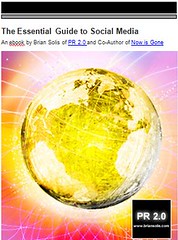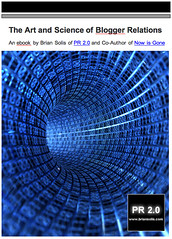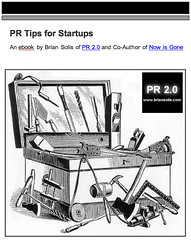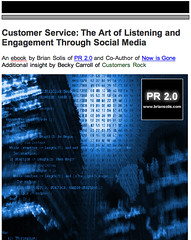Experiments and Lessons Learned in Social Media – Part II

Source
Jonathan Crow of ThinkFree recently conducted what he calls "The Great Social Experiment," where he tested the art of online social networking to evaluate whether or not joining the conversation across popular online communities would benefit his company.
Crow created a roundtable featuring Chris Brogan, Aaron Brazell, Cathryn Hrudicka, Doug Haslam, and me to offer feedback, constructive criticism, and advice to help ThinkFree and other companies learn from his experiment.
Before you read below, make sure to first read, “The Art and Science of Social Media and Community Relations.”
2. How should we be judging the outcomes from social networking activities? Are there tools you recommend?
As I mentioned in my last post, in order for businesses to understand Social Media, it requires a realistic strategy, goals, metrics, and a tactical plan. It all starts with answering two questions, why do we want to participate and what do we want to get out of it?
This is usually where traditional media and new media split. Traditional marketing is rooted in tangible results such as press coverage, traffic, revenue and those things should still matter in conversational marketing. This can’t be solely driven by experimentation because time is money!
Metrics must be determined before engaging and then actively monitored and analyzed to modify future interactions and targets to stay on track.
However, there is an investment component in all of this that’s somewhat comparable to the model of having a great customer service infrastructure. It’s actually a significant cost center to all businesses that care about having a global community of happy, satisfied, and enthusiastic customers. The difference is that with Social Media, an outbound element is added to the traditional inbound model.
No it’s not a copout for aligning metrics to engagement. It is, though, a different way to look at things. And, it brings the discussion outside of just PR and marketing. Meaningful engagement can also be led by product marketing and customer service.
Last year I discussed the concept of scientifically analyzing the Return on Participation (ROP) or Return on Engagement (ROE), which called for feedback to help determine what it is that matters to businesses in order to justify the expense of running social media campaigns.
The easy answer is as true today as it was then. It’s different for each company.
It’s also different specific to the campaign you’re running.
I think it creates new line items that are separate from traditional marketing and should receive funding and resources from both marketing and customer service budgets.
In general, some of the most effective ways that we’ve measured success to date include community feedback, trackable conversations, traffic through landing pages, referrals, and also registrations specific to campaigns. Really, it’s similar in concept to Web marketing. However, measuring conversations and tracking associated activity is an interesting and creative art.
The tools that we use to track activity and conversations include Technorati, Twitter, blogpulse, Google Blog Search, Compete, Google Analytics, Alexa, specific social network searches, among others.
What’s the value of a conversation?
What’s the value of transforming an unhappy customer into an enthusiast?
Many companies can learn from big businesses who are shifting their reward-based strategies from who can take the most calls in an hour to who can create the most enthusiasts.
Like I’ve said, customer service is the new, new marketing and there’s a lot to learn from separating (or expanding) engagement from PR to those immersed in the product, its value, benefits, strengths, and weaknesses.
Measurement is a combination of customer service, brand resonance, brand loyalty and bottom line business traction and lead generation.
And like I’ve always said, businesses will earn the respect, and ultimately the business, of the customers they deserve.
Click here to read the responses from the entire roundtable.
----
Experiments and Lessons Learned in Social Media Part I
The Art and Science of Social Media and Community Relations
----
Connect with me on Twitter, Jaiku, Pownce, Plaxo, or Facebook.
social+media socialmedia social media media2.0 media+2.0 2.0 pr2.0 pr+2.0 pr public+relations public relations publicrelations marketing communications publicity blog thinkfree social+networks networks












0 Comments:
Post a Comment
<< Home